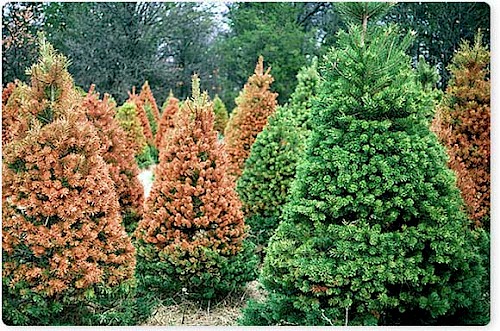Winter burn poses a significant challenge for conifers across Iowa, as revealed by reports from the Iowa Department of Natural Resources (DNR). Arborvitae and white pine trees, in particular, are grappling with varying degrees of damage from moderate to severe winter burns.
Tivon Feeley, a forest health forester with the DNR, sheds light on the underlying factors contributing to this issue. He points out that prolonged frozen ground and above-freezing temperatures at the onset of the year have created a detrimental scenario. When trees are unable to access water from the frozen soil, they are compelled to draw from their water reserves stored in the needles. This imbalance leads to desiccation, or drying out, of the trees.
Winter burn tends to afflict conifers situated in exposed, unprotected locations that bear the brunt of severe winter weather. Recognizable symptoms include the browning or bleaching of needles, needle loss, and even tree mortality. These signs become more conspicuous as temperatures rise, particularly affecting the side of the tree that faced direct sunlight or wind during the winter months.
Feeley offers insights into the potential outcomes based on the condition of the tree’s needles and buds. If only the needles are affected while the buds remain viable, the tree has the capacity to regenerate new foliage. However, if both needles and buds succumb to the damage, the chances of recovery are slim, necessitating tree removal.
Preventing winter burn entirely proves elusive, but proactive measures can mitigate its risks. Proper mulching around conifers and ensuring adequate hydration before the onset of dormancy in the fall are recommended practices. This precaution becomes especially crucial in drought years.
Furthermore, the DNR advises caution when planting conifers in newly established windbreaks. Deciduous trees are often a more favorable choice due to their faster growth, fewer susceptibility to diseases and insects, and quicker provision of protection. For additional guidance, individuals are encouraged to reach out to their local district forester.

